ASM Metals HandBook Vol. 17 - Nondestructive Evaluation and Quality Control
Подождите немного. Документ загружается.

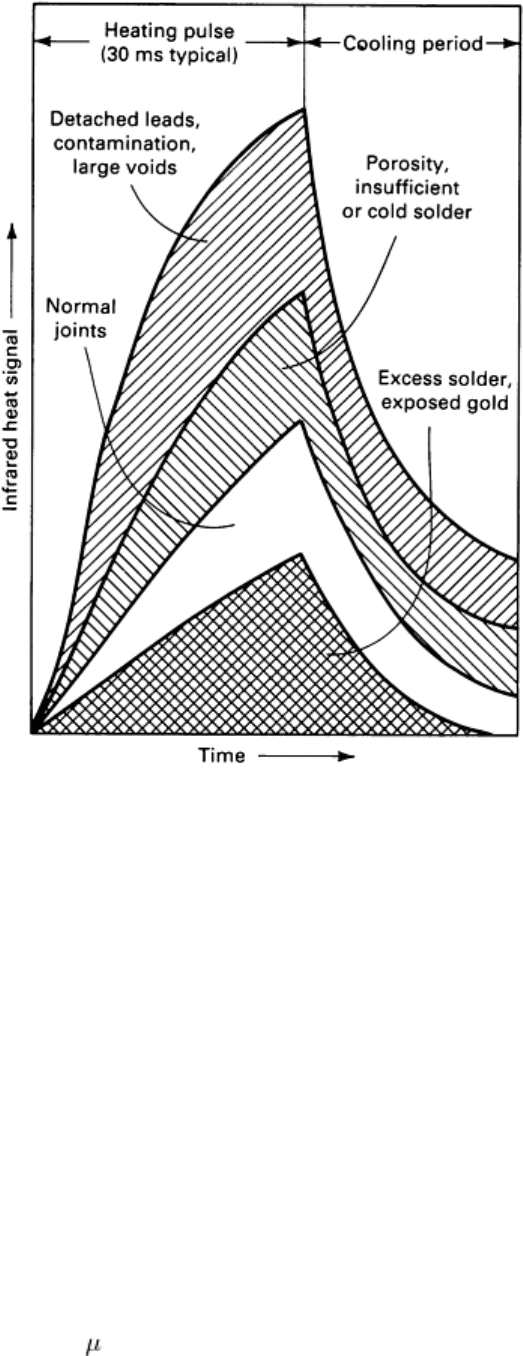
Fig. 55
Typical thermal signatures for acceptable and defective soldered joints inspected by the laser beam
heating technique. Source: Ref 9
In acoustic microscopy, magnified acoustic images of the elastic structure of the surface or interior of a solid are produced
by passing high-frequency focused acoustic pulses through the material and displaying the received signals in image form
as shades of gray (Ref 10). Usually, much higher frequencies are used than in other kinds of acoustic imaging. The
acoustic pulses are focused directly, or the energy used to produce the pulses is focused into a very small region. When a
small area of a specimen is scanned with a series of focused pulses and the transmitted or reflected signals are viewed on
an imaging system (a television picture tube, a gray-scale recorder, or some other scanned display), the magnification of
the resulting image is equal to the ratio at the diameter of the display to the diameter of the area scanned. At present,
acoustic microscopy includes several methods for the formation of magnified acoustic images. The three discussed in the
article "Acoustic Microscopy" in this Volume are scanning acoustic microscopy, C-mode scanning acoustic microscopy,
and scanning laser acoustic microscopy. Acoustic images can also be produced by C-scan ultrasonic imaging as described
in the article "Ultrasonic Inspection" in this Volume. The following example demonstrates the use of combined x-ray
inspection and acoustic microscopy for determining soldered joint integrity.
Example 3: Determination of Silicon-Solder Attachment Integrity.
Two [111] cut silicon wafers, 40 mm (1.5 in.) in diameter and 0.32 mm (0.0125 in.) thick, were vacuum soldered
together. The solder foil was initially 25 m (0.001 in.) thick before melting. The sample was fabricated to study silicon-
solder integrity through the use of acoustic microscopy and x-ray shadow-graphs.
Sample Preparation. The sample was prepared in the following manner:
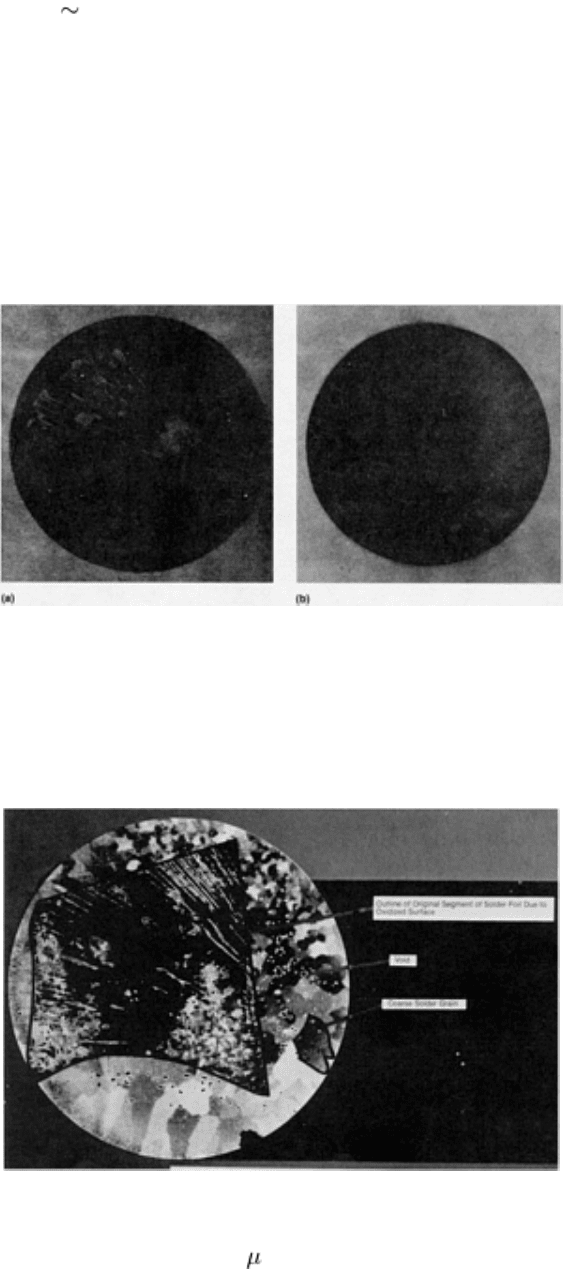
• A solder foil
was placed between the two prepared silicon wafer surfaces. The assembly was placed in a
vacuum apparatus, on a surface that could be heated electrically, with an axial load applied
perpendicular to the plane of the wafers
• A vacuum was applied (
135 Pa, or 1 torr), the sample was heated, the solder melted, and then the
assembly was cooled under vacuum. The x-ray image shown in Fig. 56
(a) was taken at this step in the
sample preparation. Figure 56(a) clearly shows a number of voids in the solder layer
•
Because of the voids in the solder layer, the sample was reheated, this time in a dry nitrogen glove box,
at atmospheric pressure. An additional x-ray image (Fig. 56
b) indicated that the large voids had now
been closed. This was possib
le at the modest pressure applied by the atmosphere because the voids
contained only vacuum. However, an acoustic microscope image (Fig. 57
), in addition to displaying
grain structure and small voids, indicated that the solder still was not well attached and had probably
never achieved good attachment over most of the initial solder foil area
Fig. 56 X-ray images of silicon-solder sample. (a) X-
ray shadowgraph after initial solder bond in vacuum.
Light-gray areas are voids in the solder. (b) X-
ray shadowgraph of sample after reheating at atmospheric
pressure. Note that most of the major voids have been closed. Courtesy of Robert S. Gilmore, General Electric
Research and Development Center
Fig. 57 Acoustic micrograph made with a 50-
MHz transducer focused through the silicon on the solder bond.
The focused beam diameter is approximately 75
m (0.003 in.). Courtesy of Robert S. Gilmore, General
Electric Research and Development Center
Inspection Procedure/Defect Analysis. The microfocus x-ray images were made at 100 kV with Polaroid film.
The wafer and film were placed at a source-to-target distance of approximately 750 mm (30 in.).
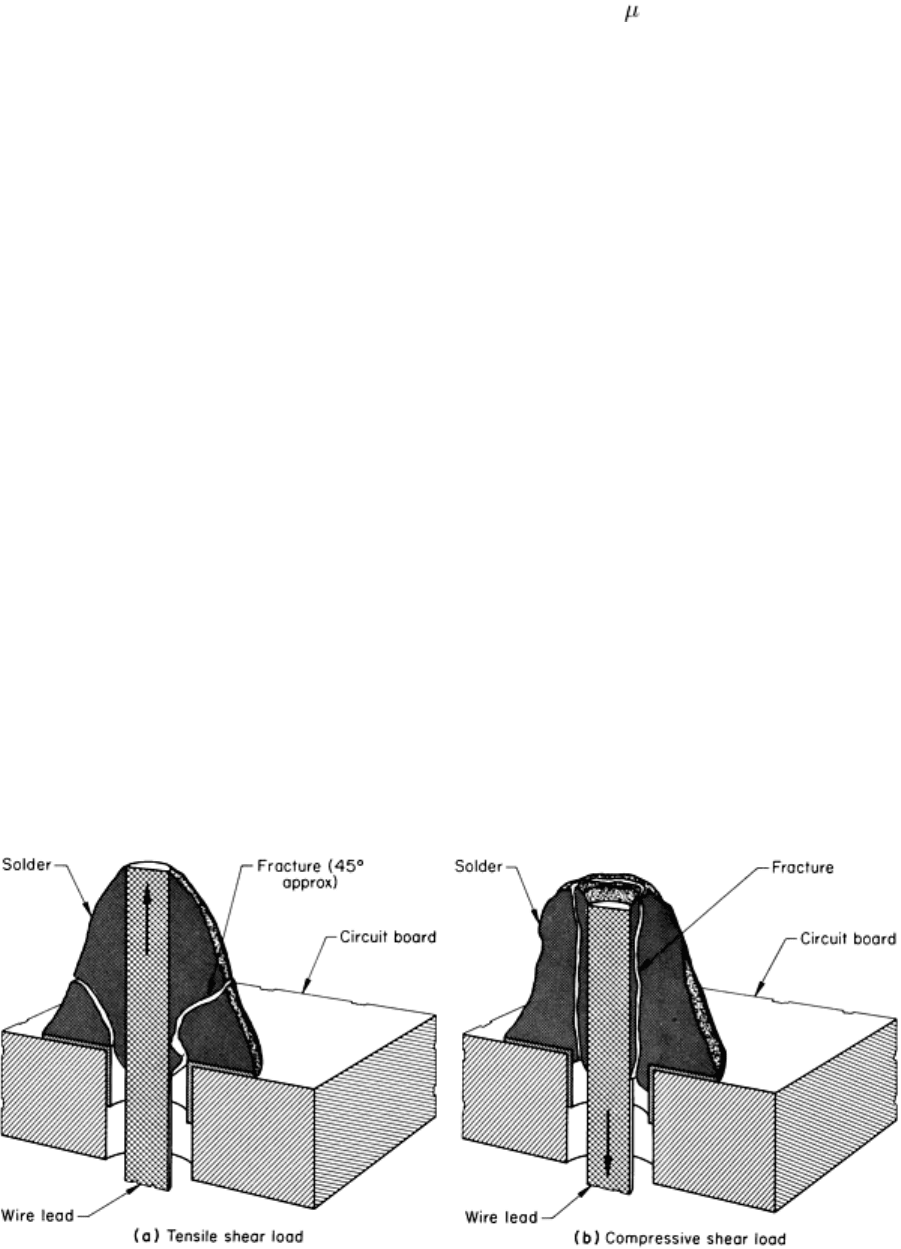
The acoustic micrographs were made with an ultrasonic microscope using a 6 mm (0.25 in.) diam 50-MHz transducer
with a focal length of 13 mm (0.5 in.) in water. Figure 57 was made by focusing the ultrasonic beam on the solder layer
and scanning it at a pulse-to-pulse and line-to-line spacing of approximately 25 m (0.001 in.). The gray-scale display is
of the amplitude of the ultrasonic echo from the solder layer. The solder grains are imaged because their elastic anisotropy
results in a different echo amplitude at the silicon/solder interface.
Conclusions. X-ray images clearly indicated voids where the pores contained substantial volume. However, because the
x-rays produced no difference in density, they could not detect a lack of attachment between a solder layer of uniform
thickness and the two wafers, where the lack of attachment was not accompanied by a pore volume. Small voids also
showed poor detectability when they resulted in an intensity change of less than a shade of gray (-3 dB) in the x-ray
transmission shadowgraph image.
The acoustic image (Fig. 57) clearly displays the attachment integrity of the final assembly as well as evidence of the
stages in its preparation. The grain size in the well-attached portion of the solder layer is clearly displayed, as are the
voids in this layer. The outlines of the original x-ray detected voids are indicated as well as the grain structure of the
solder now filling these areas and the location of a few small voids still remaining. The lack of attachment over large
regions of the wafer is indicated, and the fabricators of the sample verified that these regions clearly outline the original
solder foil area. It seems reasonable to conclude that a combination of x-ray and acoustic evaluations could supply the
most information on silicon-solder attachment, but for this specific geometry the acoustic images provided the most
information.
Cracked Soldered Joints
Cracks occur in soldered joints for a number of reasons, and each type of crack may have a distinctive appearance.
Among the causes of cracks in soldered joints are excessive mechanical loads, differential thermal expansion, foreign
material, improper joint clearances, and intermetallic compound layers.
Excessive mechanical loads produce fractures that are characterized by the nature of the applied stress. As the load
increases, the cracks become wider and deeper until fracture occurs. If the load on the base metal creates excessive tensile
shear loading on the solder, the specimen will exhibit a typical cup-and-cone fracture with the angle of the cone
approximately 45° to the applied load, as shown in Fig. 58(a). If the solder is overloaded in compressive shear, the
fracture surface will be parallel to the applied load, as shown in Fig. 58(b). If the joint was of questionable strength before
soldering, the inspection process itself may overload the solder and produce cracks.
Fig. 58 Fracture mode (a) in excessive tensile shear load of solder; cup-and-
cone fracture line is at 45° to the
tensile axis. (b) Fracture mode in excessive compressive shear load of solder; fracture surface is cylindrical and
is parallel to the load axis.
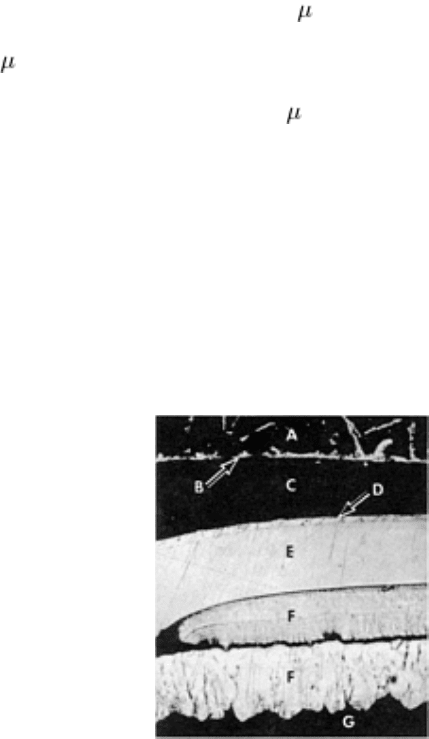
Differential thermal expansion can cause solder cracks; these generally consist of a series of closely spaced hairline
cracks. To eliminate this type of crack, design specifications concerning the choice of base metals, solder alloys, and
amount of thermal cycling permitted should be revised.
Foreign material such as flux inclusions and gas bubbles can act as nucleation sites for cracks. Small, random cracks
frequently radiate from the inclusion or bubble to the outer surface. The remedy lies in more care and skill in the
soldering operation.
Improper joint clearances may prevent proper flow of molten solder and thus create a joint of subnormal strength,
which is vulnerable to cracks. A clearance of less than 75 m (0.003 in.) may result in flux entrapment, poor solder
penetration, and voids. Small, random cracks may radiate from the voids to the outer surface. On the other hand, a
clearance greater than 125 m (0.005 in.) may impair the capillary flow of molten solder and also form voids. In this
situation, cracks may form parallel to the joint at the point of incomplete fill. The most satisfactory capillary flow of
solder is achieved with joint clearances between 75 and 125 m (0.003 and 0.005 in.).
Intermetallic compound layers formed in the solder may cause embrittlement and subsequent cracking. Generally,
the cracks are parallel to the surface of the part and open to the surface for a comparatively long distance. They may result
from high temperature, or excessive time at temperature, during the soldering operation, or from the alloy combinations
chosen for the joint. In high-reliability systems, for example, the connections are frequently gold plated before soldering
to ensure good corrosion resistance and adequate solderability. However, if the gold finish is only partly dissolved in the
solder, a layered structure may form that is very susceptible to cracking. This structure consists of layers of gold plate, of
the AuSn
4
intermetallic compound, and of solder. It is the interface between the soft gold and the hard AuSn
4
that initiates
the cracks. A printed circuit board connection with a crack between the gold plate and the AuSn
4
is shown in Fig. 59.
Fig. 59 Section through a cracked soldered connection on a printed circuit board. At A is the tin-
lead solder
with a thin layer of the intermetallic compound AuSn
4
(B) on its underface. C is the crack that opened
at the
interface between the AuSn
4
and a layer of gold plate at D. E is a layer of nickel plating over two layers of
copper plate (F) on the circuit board (G). 500×
Corrosion of Soldered Joints
Either galvanic or chemical corrosion can attack a soldered joint to a degree that may severely weaken its structural
integrity or completely destroy it. In electrical connections, the occurrence of corrosion in a soldered joint may either
increase the circuit resistance by impairment of contact or cause current leakage through surface deposits of conductive
corrosion products. Problems in relay contacts can arise because of deposits of nonconductive corrosion products on
conductive surfaces. Although the corrosion products due to many causes of corrosion are visible as white or green
powder or dust around the soldered joint, corrosion due to flux residues will not necessarily result in discernible corrosion
products.
Galvanic corrosion will occur when a sufficiently large difference in electromotive force exists between base metals or
between solder and base metal, provided that an electrolyte is present on the soldered joint.

Chemical corrosion of soldered joints is frequently caused by inadequate removal of corrosive flux residues left from
the soldering operation. Other causes of chemical corrosion include residual plating or etching solutions and
contamination from packaging materials, handling procedures (including human perspiration), and environmental
conditions. Additional information on the corrosion characteristics of soldering alloys and soldered assemblies is
available in Corrosion, Volume 13 of ASM Handbook, formerly 9th Edition Metals Handbook.
Cleanliness in Soldered Joints
It is important that traces of flux or flux residues be removed during postsoldering cleaning procedures. In addition, many
solder operations are by nature contributors of small solder droplets. These small metallic particles can eventually be
dislodged in the assembly and can cause short circuits and other undesirable side effects. When an assembly is improperly
cleaned after soldering or fluxes are not removed, visual inspection is physically hampered. Cleanliness is therefore one
of the items that should be specified in any proper procedure for the inspection of soldered joints.
Developments in high-reliability low-current circuitry (especially printed circuits) have emphasized the importance of
cleanliness of electronic assemblies because of the danger of corrosion. Corrosion damage to conductors can increase
circuit resistance, and high resistance is undesirable. Corrosion can also cause physical failure of the conductors by
weakening and embrittlement. In addition, corrosion products themselves can cause current leakage. Current leakages are
particularly bad because they are not consistent; humidity changes in the atmosphere cause variations in and sometimes
intermittent occurrences of current leakage. Corrosion products also can cause contamination throughout the whole
system in the form of nonconductive deposits on mechanical contacts and relay surfaces. Corrosion is definitely a
problem, but corrosion is not always caused by fluxes. Additional information on the sources of corrosion in electronic
components is available in the articles "Corrosion in the Electronics Industry" and "Case Histories and Failures of
Electronics and Communications Equipment" in Corrosion, Volume 13 of ASM Handbook, formerly 9th Edition Metals
Handbook.
Cleanliness is easily checked after the proper cleaning procedures are followed. The danger to the assembly stems from
the presence of ionizable materials, mostly chlorides. The easiest and most thorough check is done with a conductivity
cell and distilled and demineralized water, either leaching the ionizable materials off the surfaces in premeasured amounts
of water or submerging the whole assembly into a container of the water and measuring the resistivity of the water. This
indicates the presence of ionizable materials. However, because chlorides are the major contributors in the corrosion
mechanism and are the most abundant form of ionic contamination on the assembly, standardized, simple silver nitrate
tests can be used to establish the presence of chlorides.
Cleanliness after soldering is important because soldering is usually the last step in a long process of assembly. However,
precautions must be taken to prevent recontamination of the surfaces; otherwise, the purpose of cleanliness and of the
check for corrosion products in the final inspection is defeated.
References cited in this section
8.
R. Vanzetti, "Intelligent Laser Soldering Inspection and Process Control, Electronics Reliability and
Measurement Technology," NASA CP-2472, National Aeronautics and Spac
e Administration, June 1986, p
85-94
9. A.C. Traub, Parts Inspection by Laser Beam Heat Injection, NDT Int., Vol 21 (No. 2), April 1988, p 63-69
10.
R.S. Gilmore, Acoustic Microscopy, in Encyclopedia of Materials Science and Engineering,
Pergamon
Press, 1986, p 38-43
Note cited in this section
** Example 3was prepared by Dr. Robert S. Gilmore, General Electric Research and Development Center.
Nondestructive Inspection of Weldments, Brazed Assemblies, and Soldered Joints
References

1. T.M. Mansour, Ultrasonic Inspection of Spot Welds in Thin-Gage Steel, Mater. Eval.,
Vol 46 (No. 5),
April 1988, p 650-658
2. P. Kapranos and R. Priestner, NDE of Diffusion Bonds, Met. Mater., Vol 3 (No. 4), April 1987, p 194-198
3.
P.G. Partridge, "Diffusion Bonding of Metals," Advisory Group for Aerospace Research and Development
(NATO), Aug 1987, p 5.1-5.23
4. G. Tober and S. Elze, "Ultrasonic Testing Techniques for Diffusion-
Bonded Titanium Components,"
Advisory Group for Aerospace Research and Development (NATO), July 1986, p 11.1-11.10
5. Diffusion Welding and Brazing, Vol 3, 7th ed., Welding Handbook, American Welding Society, 198
0, p
311-335
6. J.J. Munro, R.E. McNulty, and W.Nuding, Weld Inspection by Real-Time Radiography, Mater. Eval.,
Vol
45 (No. 11), Nov 1987, p 1303-1309
7.
G.L. Burkhardt and B.N. Ranganathan, Flaw Detection in Aluminum Welds by the Electric Current
Perturbation Method, in Review of Progress in Quantitative Nondestructive Evaluation,
Vol 4A, Plenum
Press, 1985, p 483-490
8.
R. Vanzetti, "Intelligent Laser Soldering Inspection and Process Control, Electronics Reliability and
Measurement Technology," NASA CP-
2472, National Aeronautics and Space Administration, June 1986,
p 85-94
9. A.C. Traub, Parts Inspection by Laser Beam Heat Injection, NDT Int., Vol 21 (No. 2), April 1988, p 63-69
10. R.S. Gilmore, Acoustic Microscopy, in Encyclopedia of Materials Science and Engineering,
Pergamon
Press, 1986, p 38-43
Nondestructive Inspection of Adhesive-Bonded Joints
*
Donald J. Hagemaier, Douglas Aircraft Company, McDonnell Douglas Corporation
Introduction
ADHESIVE-BONDED JOINTS in which adhesives are used to join and reinforce materials (Fig. 1), are extensively used
in aircraft components and assemblies where structural integrity is critical. Figures 2 and 3 show typical adhesive-bonded
joints used in aircraft structural assemblies. However, the structural components are not limited to aircraft applications,
but can be translated to commercial and consumer product applications as well. In terms of production cost, ability to
accommodate manufacturing tolerances and component complexity, facility and tooling requirements, reliability, and
repairability, adhesive bonding is very competitive when compared to both co-cure and mechanical fastener joining
methods.
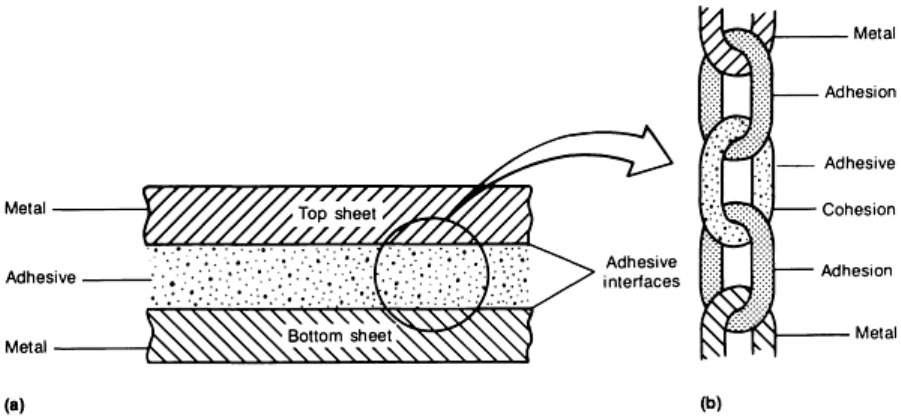
Fig. 1 Schematic of a metal-to-metal adhesive-
bonded joint. (a) Adhesive sandwiched between two metal
sheets. (b) Analogy of adhesive-bonded joint components to individual links in a chain
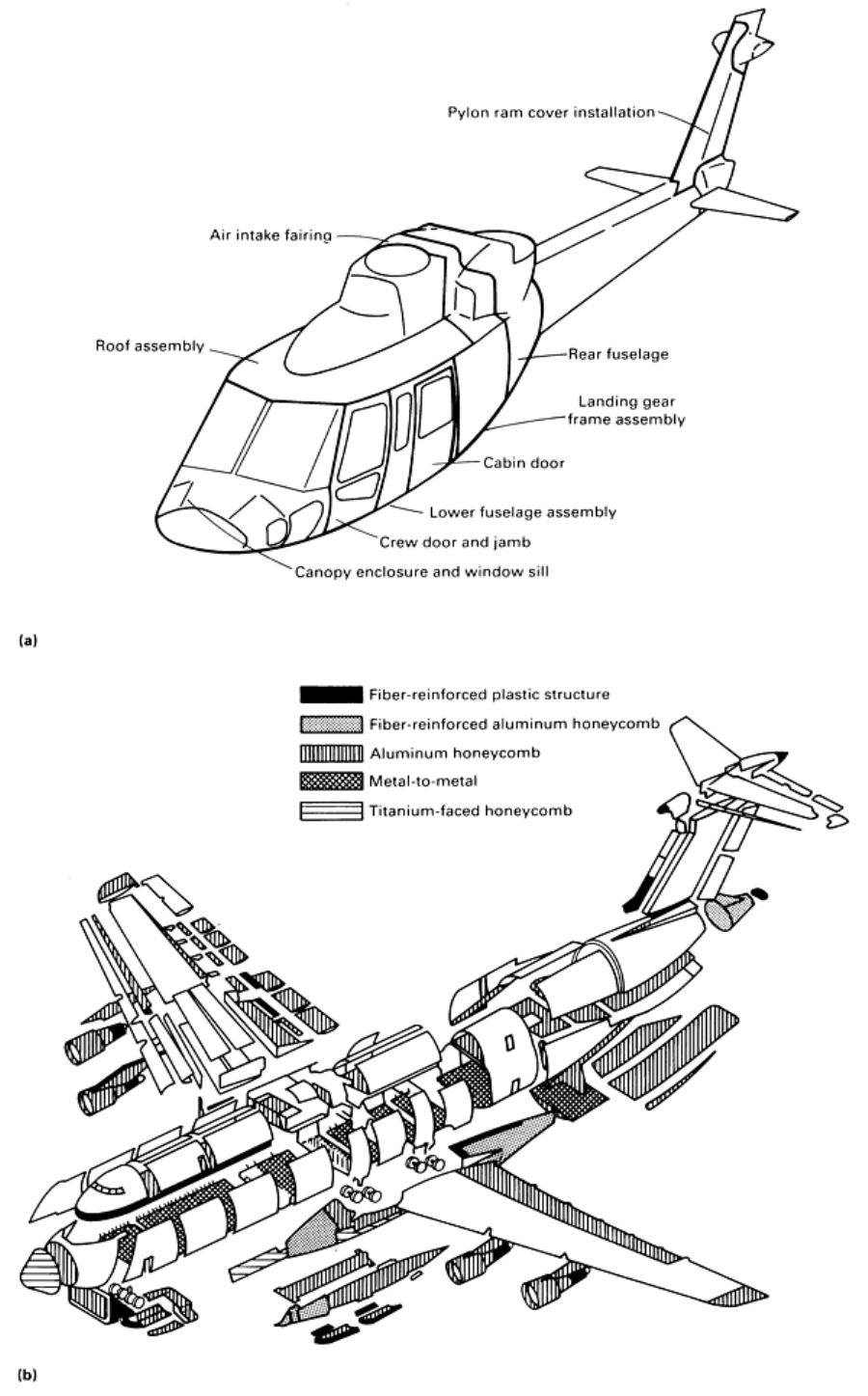
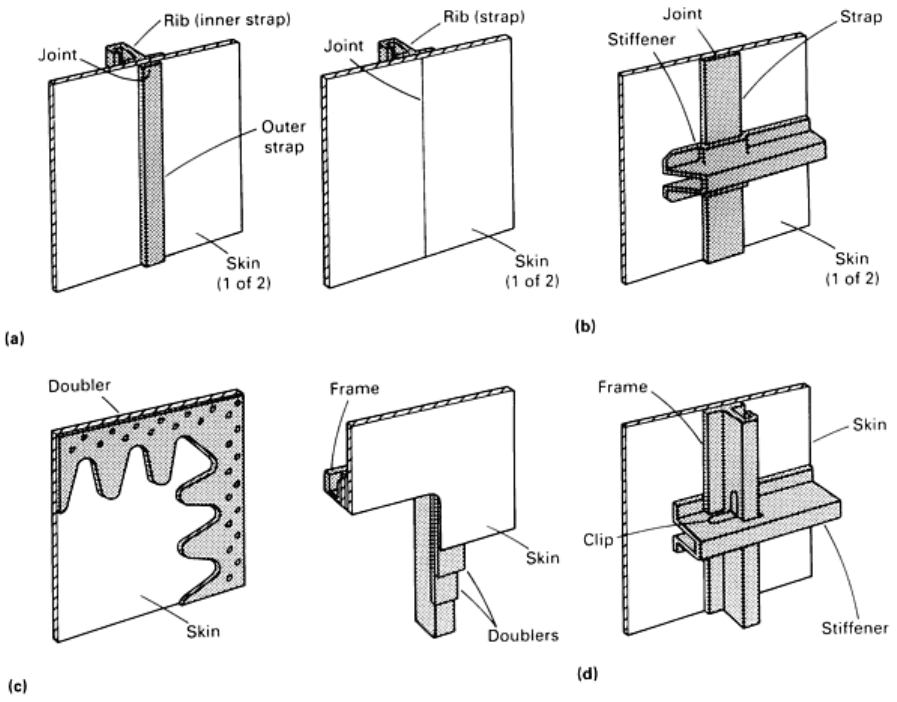
Fig. 2 Typical applications of adhesive-bonded joints in aircraft. (a) Helicopter components. (b) Lockheed C-
5A
transport plane, with various types of honeycomb sandwich structures totaling 2230 m
2
(24,000 ft
2
) in area
Fig. 3 Some typical adhesive-bonded joints used to j
oin components in structural assemblies. (a) Skin splices.
(b) Stiffener runout. (c) Bonded doublers. (d) Shear clip
Variables such as voids (lack of bond), inclusions, or variations in glue line thickness are present in adhesive-bonded
joints and will affect joint strength. This article addresses the problem of how to inspect bonded assemblies so that all
discrepancies are identified. Once the flaws are located, engineering judgment and analysis can determine if adequate
strength exists or if the parts need to be reworked or scrapped. When very large and costly assemblies have been bonded,
the importance of good non-destructive inspections is fully appreciated.
This article describes several techniques and presents drawbacks and limitations where they exist. No single method or
procedure can locate every flaw, so it is important for personnel to be aware of the available techniques and their
limitations. Bonded assemblies are inspected immediately after the adhesive cure cycle, after the parts have been cleaned
and removed from the manufacturing jigs or fixtures. The next important time for inspection is after the assemblies have
been in use and the condition of the parts is known. It is necessary to determine if new delaminations have occurred or if
any metal cracks have developed. Inspection in the field requires the instruments to be easily transported and to be used in
confined places.
The commonly used terms describe what is to be done. For example, nondestructive testing (NDT) comprises the testing
principles methodology, nondestructive inspection (NDI) involves inspection to meet an established specification or
procedure, and nondestructive evaluation (NDE) is the actual examination of materials, components, and assemblies to
define and classify anomalies or discontinuities in terms of size, shape, type, and location. This article specifically
addresses the three terms as they apply to adhesive-bonded joints within structures.
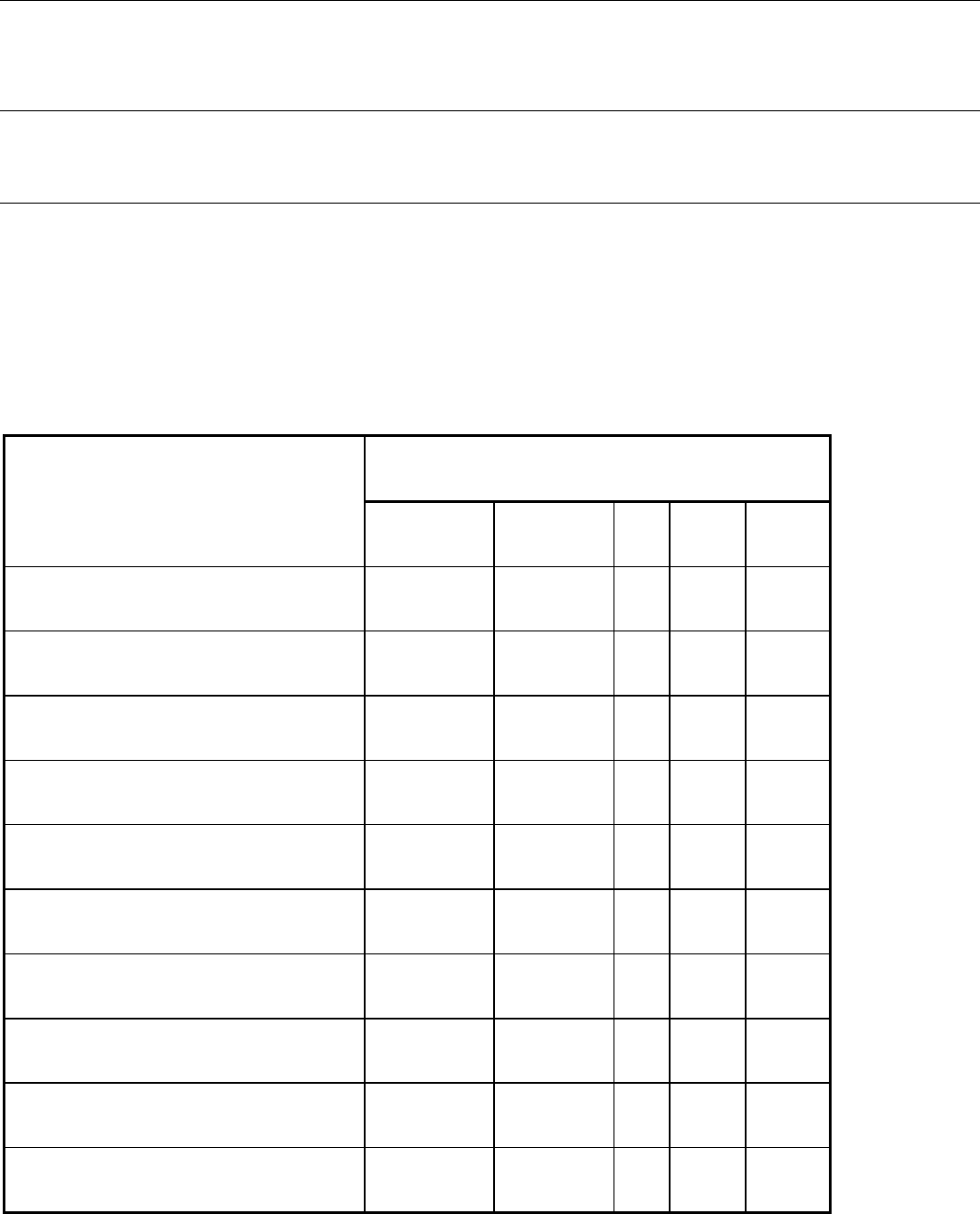
Inspection reference standards must be developed for each instrument, and the standards must be made available to and
used by inspectors to standardize their equipment and to permit them to detect anomalies that will indicate a flaw.
Inspectors must also be familiar with the internal details of the assembly being inspected so that they can distinguish
between flaws and legitimate structural details. For example, how many layers of metal were bonded at any one spot?
Note
* Reprinted from Adhesive Bonding of Aluminum Alloys, Marcel Dekker, 1985, p 337-423. With permission
Nondestructive Inspection of Adhesive-Bonded Joints
*
Donald J. Hagemaier, Douglas Aircraft Company, McDonnell Douglas Corporation
Description of Defects
There are a wide variety of flaws or discontinuities that can occur in adhesive-bonded structures. Table 1 lists possible
generic flaw types and their producing mechanisms. Metal-to-metal voids or unbonds are the most frequently occurring
rejectable flaws, as indicated in Table 2.
Table 1 Generic flaw types and flaw-producing mechanisms
Generic flaw type
Flaw-producing mechanism
Metal-to-metal
Metal-to-core
Core
Surface
Adhesive
Disbonds, internal X
Disbonds, part edge X X
Disbonds, high core X
Porosity X X X
X
Unremoved protective release film from adhesive
X X
Foam adhesive in film adhesive bond line X X
Cut adhesive X X
X
Adhesive gaps X X
Missing adhesive X X X
Weak bonds X X X
